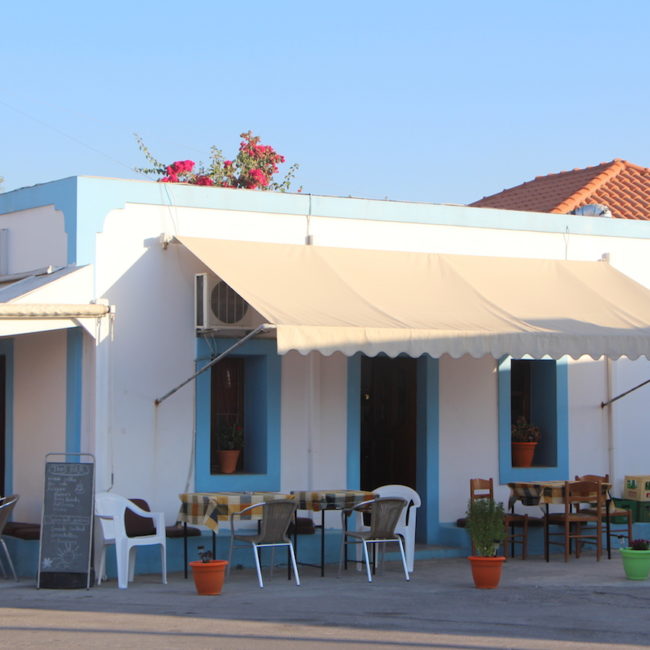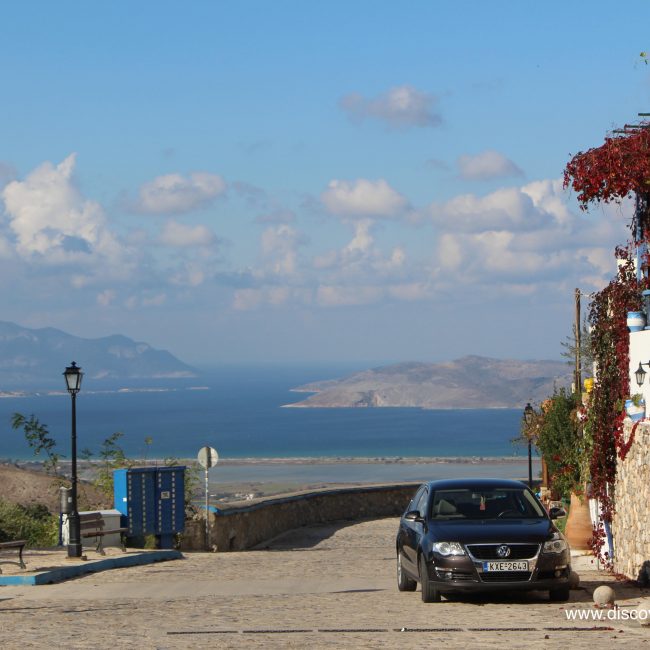The Alasarna Archaeological site which is situated right on the outskirts of Kardamena, is one of the most significant on the island of Kos. The Bavarian archaeologist Ludwig Ross was the first to identify the archaeological site with the ancient town of Alasarna. The Department of Archaeology and History of the University of Athens has put in a lot of effort since 1985 to systematically excavate and research the site. From the outset, the aim was twofold: to uncover the important remains that lay in the area around the renowned temple of Apollo and Heracles , in order to find clues and answers that would in turn help reconstruct a timeline of the historical developments that shaped this part of the island.
As archaeological finds have shown the town/port of Alasarna was a very busy commercial center right up until the 5th or 6th century AD. The bustling town was a major hub, entering into commercial transactions with other major ports of the time like Athens and Corinth. Alasarna reached its biggest prosperity during the Hellenistic period, with its theatre, temples and monumental buildings.
Early beginnings
The name of Alasarna is probably of eastern origin. Alasarna was the capital of the Deme of the Alasarnites, one of the 6 ancient Demes of Kos. Archaeological findings show that the region was inhabited from the late Neolithic period (5t-4th millenium BC). However no remains of a settlement, temple or cemetery dating from before the Geometric period (10th-8th century BC) have been found. Archaeologists do not have information on the size and shape of the settlement of Alasarna during the Archaic (7th-6th century BC) or even Classic period (5th-4th century BC). Ceramic artefacts found in Alasarna attest commercial transactions with other major ports of the time like Athens and Corinth
Hellenistic – Roman period
During the hellenistic period (3rd-1st century BC), the deme of Alasarnites was the second most important of the 6 Demes of Kos, from a religious standpoint. It was an important urban centre with circa 1,000 inhabitants, foreign residents (paroikoi) and slaves aside.
It is believed that the acropolis (citadel) of Alasarna was on the hill Tholos, overlooking the archaeological site from the North. In 1928, the Italian archaeologist Luciano Laurenzi excavated an ancient theatre on the northeastern slope of the hill Tholos, where 6 seats and part of the scene were uncovered. Nowadays, there are unfortunately no visible remains of the theatre; most of them must have been used as building material for the houses of Kardamena. The theatre was most probably built during the Hellenistic period (3rd-1st century BC) and maybe renovated during the Roman period (1st century BC-4th century AD).
Temple of Apollo
The Temple of Apollo is considered to be the island’s most ancient temple and second in richness after the Asklepieion. It links the city of Alasarna to the cult of Apollo which is older than that of Asklepios, whose place of worship was near the capital of Kos. This center was very important throughout ancient times, even after the capital of Kos was moved to the Kos Town area from Astypalaia (in the Kefalos area) in 366 B.C. The sanctuary perdured, maintaining its well established status in the religious life of the island throughout the Roman period.
Even though the Temple of Apollo already existed during the Archaic period (7th-6th century BC), we only have reliable information on the Temple of Apollo “Pythaiou” or “Pythaeos” dating from the Hellenistic period (3rd century BC), located on the North side of the archaeological site, on the foothills of the Tholos hill, and excavated from 1994 to 1998 (known as Building C or Γ). The platform and three stairs from this oblong temple are still visible, as well as a series of plaques of travertine limestone that constituted the lower part of its walls. The temple was 16,49 m. long and 9,30 m. wide, oriented east to west like all ancient temples, and built mainly with local stones from the Antimachia region. Two Doric columns stood in the entrance of the temple (to the East), with triglyphs and metopes, whose remains are still visible. Railings between the columns used to seal the entrance or pronaos of the temple. A big monolithic threshold, now broken in two, led to the inner temple (naos). Both the columns and the threshold were made of grey Coan marble, while the floor of white marble floor, laid over red porous limestone from Kefalos. Seven pedestals were also found surrounding the temple. To the east of the temple, a pit was unearthed, where sacrifices to the chtonic deities were made, most probably between the 3rd and 5th century AD, after the destruction and abandonment of the temple and before the construction of the settlement during the early Christian period that covered all the archaeological site.
The modern cement structure lying in the middle of the archaeological site constitutes the foundations of a hotel that resulted in the discovery of Alasarna in the 1990s. Unfortunately, it destroyed a majestic marble oblong building (building A), 25 meters long and 12,5 meters wide, whose western and southern walls are still visible, to the west of the concrete building. We don’t know its use but it was built between the 2nd and 1st century BC. To the east, lie the remains of another structure (building B) that was either part of the afore-mentioned building or a shrine. 4,5 meters to the north, remains of a stoa (public walkway) are still visible.
Early Christian period
Alasarna continued to thrive in the early Christian Era (4th to 7th century AD), and especially during the 4th to 6th century AD. After the devastating earthquake of 469 AD, the site of Alasarna changed from a public place of worship to a site of private dwellings. A number of houses, a cemetery, but also basilicas, that have come to light during the excavation, clearly attest to that. The abundance of small objects and pottery have shown that there was a bustling community. Arts and crafts were thriving in a productive society that sought to expand its commercial reach in order to export its wares.
Alasarna was abandoned in the mid 7th century A.D., due to pirate raids by Arabs. The coastal region near Alasarna, remained uninhabited until the 19th century, when the current village of Kardamena was founded.


















